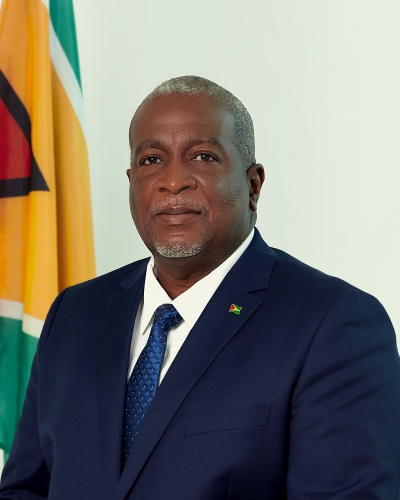In preparation for the 300-megawatt (MW) Wales gas-to-shore power plant’s late 2024 completion, government has commenced plans to upgrade the Guyana Power and Light’s (GPL) distribution grid and is awaiting evaluation of tenders for the installation of new electricity lines and substations, the Office of the Prime Minister announced.
“We are moving to modernise the grid, to install the new transmission lines and substations for the integration…,” the Office of the Prime Minister said in response to questions from the Stabroek News. “The tender is already out for that [the lines’ transmission upgrade]… We are also doing a study… by the time the gas-to-shore project is completed the grid will be upgraded and ready to receive that [power].”
Technical issues continue to plague GPL’s Deme-rara Berbice Intercon-nected System (DBIS) which serves about 90 percent of the country’s coastline where the majority of the 750,000 population lives. There are periodic power outages or shutdowns.
Reference was made to the tender, which was published last December when government issued a call for proposals for the project. It had said that the tender would have been opened on January 31. It is unclear what has caused the delay. All bidders were asked to submit their proposals together with an original proposal security in the fixed amount of US$4,000,000 no later than 09:00 hrs on Tuesday January 31, to the National Procurement and Tender Administration Board (NPTAB). That entity’s website has no record of the tender or postponement.
Interested applicants were invited to submit proposals for the provision of Engineering, Procurement and Construction (EPC) Services for the Installa-tion of Transmission Lines and Substations for the integration of the new 300 MW combined cycle gas turbine power plant.
Giving an update at the energy conference last month, gas-to-shore project lead Winston Brassington had said that as at the end of December 2022, progress details showed that an engineering, procurement and construction model had been selected and a contract was signed in the same month.
The supervisory contractor had also been selected based on a competitive tender and that contract was executed in January. The Environmen-tal and Social Impact Assessment (ESIA) is completed and this included public scoping exercises on the Terms of Reference (TOR) for the ESIA, submitting the ESIA, having the review of the ESIA completed, and getting an environmental permit issued to ExxonMobil. An interim construction permit has also been issued to the special purposes company that will be set up to manage the project.
He said that the pipeline route had been selected, route survey completed, and private land acquired under the Acquisition for Public Purposes Act at end of 2022 giving right of way for the on-shore pipeline.
The project will be executed in three phases – construction, operation and decommissioning. It entails three aspects as well. The first is an offshore pipeline which is approximately 220 kilometres of a subsea pipeline extending from new subsea tie-ins at the Destiny and Unity FPSOs in the Stabroek Block, to the proposed shore landing located approximately 3.5 kilometres west of the mouth of the Demerara River. The second is the onshore pipeline that is a continuation of the offshore line and extends about 25 kilometres from the landing site to the NGL plant. The third is the NGL plant and associated infrastructure that will be located about 23 kilometres upstream from the mouth of the Demerara River on the west bank.
Both the Liza Destiny and Liza Unity floating production storage and offloading vessels, which are operating in the offshore Stabroek Block, have pre-installed facilities to allow for the export of the associated gas along with crude production.






